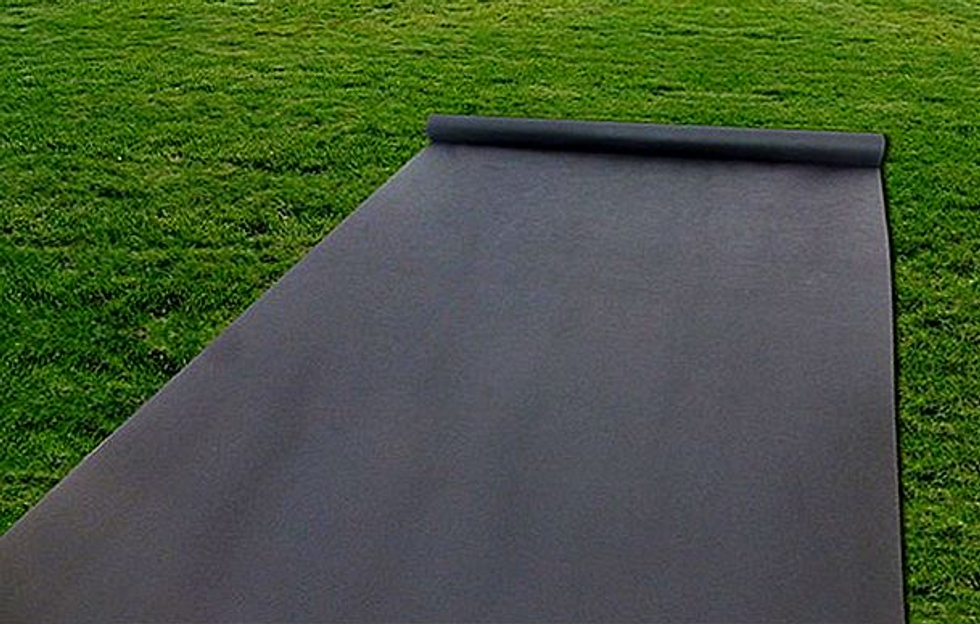Driving down the middle of the space in your yard is a patch of soft dirt where nothing is currently planted. On one side is a row of plants and a climbing fence. On the other hand, it is chain link fencing. But the unused area in the middle gets dirty.
At some point, you are planning on a makeover for this space, which includes planting a flower bed in this area. Meanwhile, you don't want weeds to run, but you don't want to bother pulling them either. I had just such a situation on my own farm, which inspired the project discussed on the following pages.
What to do when confronted with such a situation? Well, besides landscapes or "weed" fabrics, your options (and their drawbacks) are:
Organic mulches - These disintegrate, a process that is accelerated by contact with the earth. When they decompose, they become healthy soil for weeds.
Crushed stone - An inorganic mulch, crushed stone will not disintegrate. But stone easily enters the soil, which can be uncomfortable (you may want to remove it someday). It is also difficult to keep clean (leaves blow on it) and draws considerable heat to the ground which can be hard on plants.
Black plastic - Like a crushed stone mulch, it will not decompose Unlike stone, it is easy to clean. But it not only draws heat (like stone), but it also prevents air, water, and nutrients from penetrating into the earth. These disadvantages become important when installing plants in this space.
The fabric of virtue is that they, like black plastic, serve as clean and durable grass gates. But unlike black plastic, they allow a certain amount of air, water, and nutrients to penetrate the soil. In addition, a layer of organic mulch applied over landscape tissues decomposes more slowly than would be allowed to come into direct contact with the soil.
Preparing the ground for landscape fabric
Be aware that grass control is a game where you can continue, but never "win". Weeds are just too persistent to ever give up. While landscape stitches are supposed to prevent buried weeds from becoming full-blown weeds, none of the harder perennial weeds (or grasses) stop printing.
If you know that you are struggling with plant pests that grow from rhizomes or stolons, destroy rhizomes or stolons first. Then place lying fabric on confirmation of extinction. In overgrown areas, killing weeds is only part of a difficult process of "landscape architecture from the beginning".
Landscape fabric can be laid after a bed has been planted. If plants were already in place in my planting bed, I would cut slits in my landscape fabric where needed (from edge to center) as I roll it up over the bed and neatly clamp the tabs around the plant's trunks. Instead (as I begin my project on bare soil) I will make X-shaped incisions in the fabric where I want to install the plants (Step # 8). The notches will only be large enough to dig a hole for the plant's root balls. The fewer and smaller holes you put in the fabric, the better.
Landscape fabric should be installed over the ground that has been leveled. If it is laid over twigs, stones or existing weeds, it can be punctured. I recommend two tools for leveling the ground: a hook and a steel rake.
Install landscape fabrics to block weeds
In the area where I install landscape stitches, the width is large enough that I need two sheets for full coverage. When using two or more lengths of cloth next to each other, be sure to overlap.
Overlapping sheets of landscape fabric block weeds so that they do not show up through the seams. The instructions on the "Weed-X" package say you use a 3-inch overlap, but I recommend that you be on the safe side and overlap at least 6 inches.
Mount the landscape fabric with the black, shiny side facing up. If it's windy outside when installing landscape stitches, it weighs with everything heavy you can find so it won't blow.
Landscape Fabric Pros & Cons Finding an Alternative thru Sheet Mulching for Weed Controlwww.youtube.com























